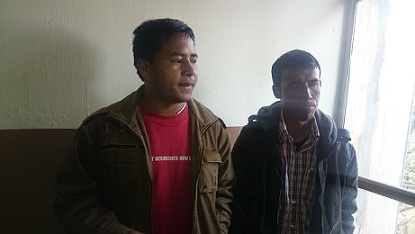
By Our Reporter
SHILLONG, DEC 20: KSU, one of the 13 pro-ILP ngos, on Tuesday demanded that the state government speed up the process of implementing the comprehensive mechanism to tackle influx into the state.
The decision was taken during the central executive council (CEC) meeting of the union today which resolved to continue to oppose the railway project till effective laws are in place.
KSU CEC discussed issues related to the anti-influx comprehensive mechanism, Meghalaya Residents Safety & Security Act, 2016, Meghalaya Benami Transaction Prohibition (Amendment) Act, 2016 and facilitation centre (entry/exit point) 2016.
“We urged the state government to fast track the implementation of the two laws by constituting the district task force (DTF),” KSU general secretary Augustine Jyrwa said after the meeting.
With regards to setting up of the entry/exit points, Jyrwa said the state government should also speed up the process of conducting the social impact assessment (SIA) especially in Ri Bhoi district, which is still pending.
Under the phase one, the government has so far identified around 18 locations for setting up the entry/exit points, which is part of the comprehensive mechanism to deal with up the issue related to influx and illegal immigrant.
These include – 6 in West Garo Hills, 5 in East Jaintia Hills, 3 in South West Garo Hills, 2 in Ri-Bhoi, 1 in West Khasi Hills and 1 in West Jaintia Hills.
Reiterating its opposition against the proposed railway project in the state, Jyrwa said, “We will continue to oppose the project from Tetelia-Byrnihat and Byrnihat-Shillong till the time that strong and effective laws, which will ensure protection of indigenous tribals’ of the state are put in place.”
The union also reiterated its demand for mass awareness on the objective of the National Peoples’ Register (NPR) programme for issuing Aadhaar number across the state before its implementation.













+ There are no comments
Add yours